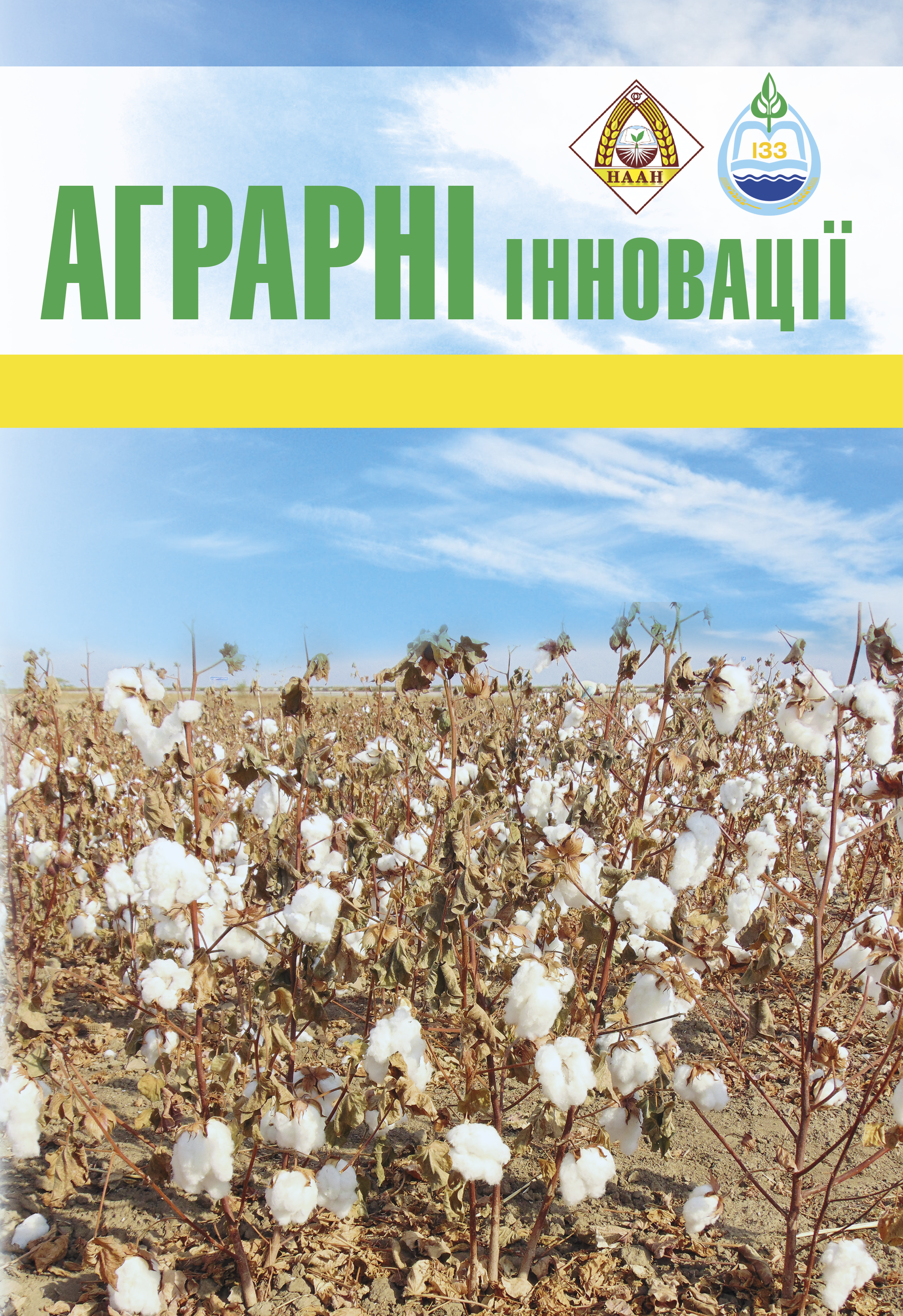Forecast of favorable and unfavorable years for winter wheat in the south of Ukraine
Abstract
Purpose. Investigate the impact of 4-year cycles of high-yielding years on the yield and gross harvest of winter wheat in the Odessa region, in the context of the possibility of predicting lean and yielding years. Methods: field, sta- tistical, analytical, calculation-comparative and theoretical generalization. Results. In the production of winter wheatgrain in the Odessa region there is a significant increase in the level of yield and gross harvest of its grain. The average annual increase in winter wheat yield in the region is 0.0155 t/ha, and the growth of gross grain harvesting is 13.7 thou- sand tons. However, the yield and gross harvest of this crop varies significantly by years, due to frequent droughts in this area. The coefficient of wheat yield variation is 26.5 %, and the gross grain harvest reaches 43.5 %. It was also found that in the high -yield years the volumes of wheat grain decreased by 18.7 %, compared to its average collection.The decrease in grain production is explained by the fact that the fall before the high -soaked years was usually arid, so in the fall, weak and liquefied crops were formed, much of which in the spring of the farm was moved, which led to the lack of grain. Winter grain is harvested in the next after high year. During these years, its gross harvest increased by 26.3 % compared to its average production. This is due to a larger wheat harvesting area and a higher grain yield by 0.33 t/ha. The identified pattern makes it possible to pre- dict favorable and adverse for growing winter wheat, with a probability of 75 %. Conclusions. In the Odessa region there is a significant increase in the level of yield and gross harvest of winter wheat. The average annual increase in its yield is 0.0155 t/ha, and the annual increase in gross grain harvest is 13.7 thousand tons. The 4-year cyclicality of favorable and adverse for growing winter wheat is clearly manifested. There is a decrease in the production of win- ter wheat in high -yielding years, an average of 18.7 %, and an increase in its production in the first year after high -yielding years – by 26.3 %. The decrease in the crop and the volume of wheat production in the high -recess years is caused by dry autumn before high -soaked years and the formation of weak, liquefied crops and sewing of part of the area. The 4-year cyclicality detected makes it possible to predict favorable and unfavorable for growing winter wheat.
References
2. Писаренко П. В., Хлебнікова Я. О. Про можливість впливу сонячної активності на врожайність сільськогосподарських культур у Полтавській області. Вісник Полтавської державної аграрної академії. 2015. №1–2. С. 11–21.
3. Писаренко П. В., Хлебнікова Я. О. Багаторічні врожайності та ″хвилі врожайності″ у Полтавському регіоні. Вісник Полтавської державної аграрної академії. 2015. №3. С. 32–39.
4. Жемела Г. П., Маренич М. М., Шкурко В. С., Гангур В. В. Агроекологічні основи прогнозування врожайності зернових культур. Бюлетень Інституту сільського господарства степової зони НААН України. 2012. № 2. С. 90-94
5. Нетіс І. Т. Пшениця озима на півдні України : монографія. Херсон: Олді-плюс, 2011. 460 с.
6. Якимчук В. Г., Жолобак Г. М., Порушкевич А. Ю., Сахацький О.І. Використання космічних і метеорологічних даних для оцінки врожайності озимої пшениці. Космічна наука і технологія. 2011. Т. 17. № 5. С. 64–67.
7. Лиховид П. В. Прогноз урожайності хлібних злаків у Херсонській області за даними супутникового моніторингу. Таврійський науковий вісник. 2023. №133 С. 46–50.
8. Нетіс І. Т. Умови вегетації і продуктивність озимої пшениці у високосні роки. Таврійський науковий вісник. 2004. Вип. 32. С. 34–37.
9. Нетіс І. Т., Онуфран Л. І. Циклічність сприятливих і несприятливих років для пшениці озимої в Україні. Аграрні інновації. Херсон: ВД ″Гельветика″, 2022. Вип. 13. С.103–107.

This work is licensed under a Creative Commons Attribution 4.0 International License.






